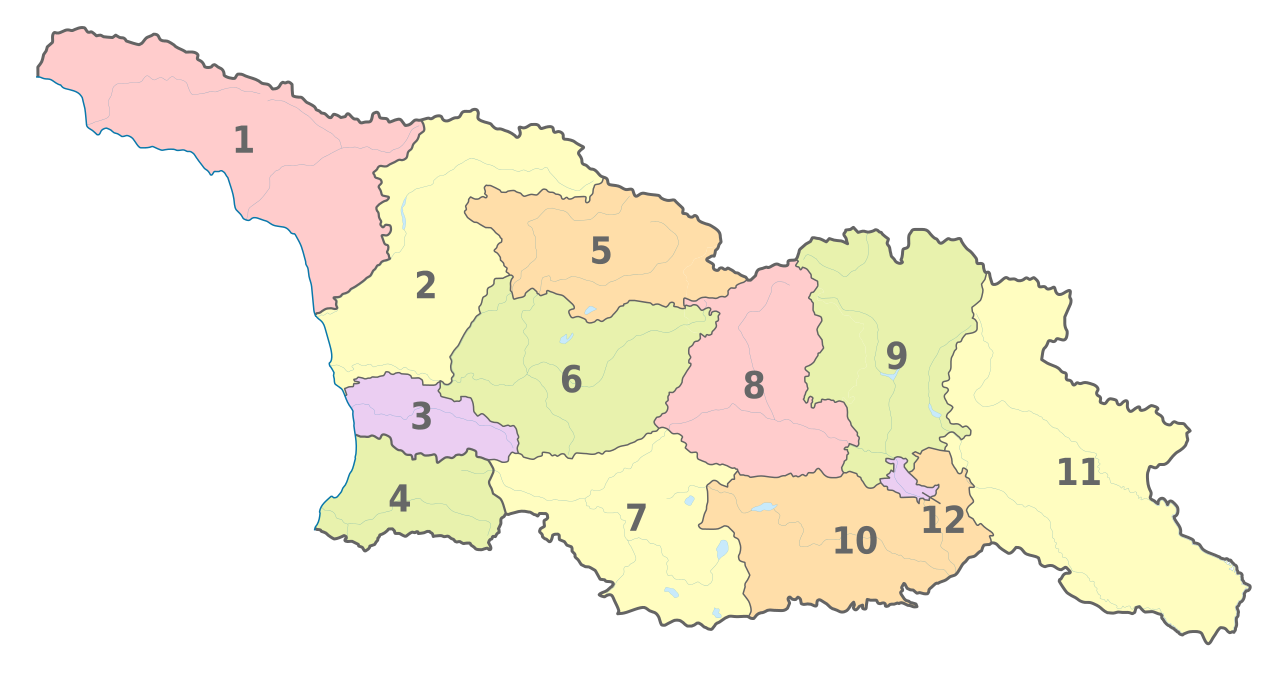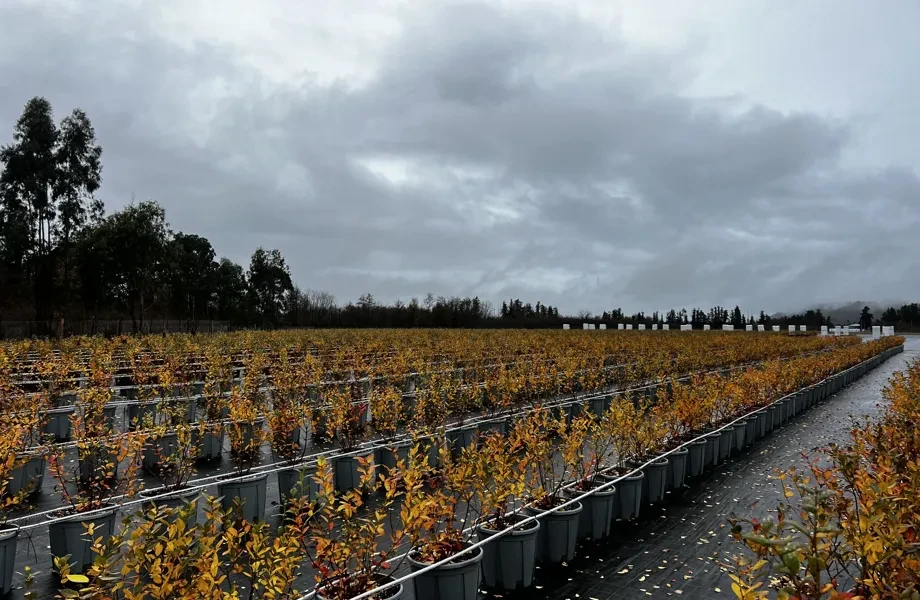Jorge Duarte, a Portuguese agronomist who advises growers at berries, has been hired by USAID's agricultural programme in Georgia to advise local growers. After a series of online seminars in 2020, he visited berries plantations in Georgia twice in April and July 2021. As Jorge has extensive experience working with berries in Morocco, Egypt, Romania, Spain, Italy, Turkey, Georgian experts from EastFruit discussed with him the current status and prospects of blueberries production in Georgia.

What was your first impression of the blueberries sector in Georgia?
In July, I visited several small and large blueberries plantations in the Guria region. Large holdings of blueberries in Portugal are rare, averaging no more than 2 hectares. blueberries is a labour-intensive crop - it can take 25 people to harvest one hectare. With the increase in plantations, producers are now facing labour shortages. And this will continue in the future due to competition between various sub-sectors and companies. The same thing has happened in Portugal, which has led to the mechanisation of certain processes such as pruning. Harvesting is still done manually. After spending a week in the orchards of Georgia, I can conclude that the level of mechanisation is low or absent.

Georgian producers believe that handpicking helps to preserve the high quality of the berries and thus sell them better on the fresh market, what can you say about this?
This is true all over the world, not just in Georgia. But it is only relevant when growing old varieties, as in Georgia. The main producing countries are now planting new varieties that are more resistant and adapted to mechanical harvesting. Cultivation of new varieties is now also a trend in Portugal; growers started planting them 3-4 years ago. However, the area planted with new varieties in Georgia is small. Georgian growers should be aware of modern varieties suitable for mechanized harvesting, because in the future they will face even greater labour shortages for manual harvesting.
Which varieties are suitable for mechanical harvesting?
It is possible to mechanise harvesting on any farm at blueberries, but the percentage of damaged fruit varies. The aim of mechanical harvesting is to harvest high quality berries with less loss. For softer varieties like New Hanover, Star or even Legacy, which can also be soft in extreme temperatures, it will be difficult to use the machines without getting many softer berries. This is not recommended, but is still possible if a grower can handle a higher reject rate. One of the best varieties for mechanical harvesting is Duke, a High Chill variety. There are also good Mid Chill and Low Chill varieties, such as Top Shelf, Blue Ribbon and Suziblue.
For mechanised harvesting, areas should be planted with blueberries in a pattern that allows the bushes to be harvested and cut correctly. All this should be considered before planting. As far as I know, there are no blueberries plantations in Georgia suitable for mechanized harvesting.
Can existing plantations be adapted to mechanical harvesting?
The main peculiarity of the planting scheme isthe distance between the rows and the pruning. The plants should be pruned so that they grow straight and do not open up. Low branches should be removed and the plants prepared for mechanical harvesting. The resistance of the fruit to mechanical harvesting, as well as the distance between the plants, are also important. The machines on the market are designed for a row spacing of 2.5-3 metres.
Existing harvesters can be adapted, or smaller machines can be found that can be attached to the tractor. Finefields from the Netherlands and Tresac from Serbia are well known in this market.
Are Georgian farmers ready now for these changes?
I think farmers are now busy with other issues such as marketing, having enough people to harvest and product quality. Other challenges include studying the use of a cooling system to maintain quality and improve irrigation management. Irrigation is not well designed in terms of the number of drippers per metre, which interferes with good water distribution around the root zone. Growers should take into account that blueberries has a very shallow root system. It is mostly 20 cm deep and the plants need a lot of water in spring and summer. Some of the growers I have seen have installed inefficient irrigation systems.
Another aspect that growers should pay attention to is fertilisation and soil improvement. The soil in the Guria region is rich in clay (50-70%), which is bad for blueberries. The soil for blueberries should be light so that water can penetrate well. I have seen soils that are too heavy and insufficient soil improvement work (proper weed removal, improving natural soil drainage with subsoilers, increasing/decreasing soil pH with lime or sulphur, adding extra organic matter to improve rooting, etc.). For tall ridges, I would recommend 40 cm high and 90-100 cm wide, which is very important to oxygenate the root system and improve water distribution. There have been several successful growers, but they have done it loosely.
It is also important to plan the planting of blueberries in advance. Modern growers cannot wait two or three years to start harvesting. They have to harvest the first crop of berries one year after planting, at least 0.5 kg to 1 kg per plant, so high-quality planting material is needed. The market sells seedlings of blueberry annuals and biennials. Most nurseries plan to grow annuals rather than biennials because biennials require more space, downsizing pots and additional substrates, which makes the seedlings more expensive. Biennials are usually used in climates with a shorter growing season than in Northern Europe.
Nurseries and growers can both benefit if they know in advance what to supply (variety, quantity and type of plants), leading to improved service and quality of plants purchased. That said, I believe that any blueberries planting project should be planned at least 2 years in advance, not 6 months as I have seen in Georgia.
Many farmers in Georgia plant in winter rather than spring, but spring is better because of the higher temperatures and better light, so the plants grow and develop the root system faster. Another issue is to order the plants in time, at least 1.5 years before planting. If one plans to plant in 3 months, one risks buying second-class seedlings from nurseries, mostly leftovers. In nurseries, seedlings are planted by in vitro propagation (common) or by stem cuttings (currently less common) with enough time (3-6 months) before they grow into the 1L, 1.5L or 2L pots that are often used.
What can be the solution for poorly growing plantations?
If the plants do not start to grow well a year or two after planting, it is best to remove them from the field and replant them. I quote Dave Brazelton, who is very knowledgeable about blueberries, who said: "You have two years to love blueberries and a lifetime to hate it".
If farmers do not take care of the planting material and soil preparation, they will not have enough success with this crop, especially on such heavy soils, as I have seen in the Guria region, so they have to do everything right.
The climate in the Guria region seems to be quite suitable for growing blueberries, but the soil has some problems, such as a high percentage of clay, which is not recommended, but can still be used to grow blueberries.
As I read in one of your publications, blueberries plantations have existed in Georgia since 2012. Nowadays, when the market is very demanding, growers should focus on improving plant design , soil and irrigation system characteristics, acquiring basic knowledge of operations, both pruning, and continuing a good and sustainable soil and plant fertilisation programme.
To sum up, as I see it, the big companies have already learned some of these lessons from their own mistakes, and now the new growers need to learn them. I also believe that the blueberries growers could benefit fromjoining forces to improve communication with each other, learn from each other and create a real blueberry supply chain in Georgia that is new and dynamic: it could be an important new arrival in the export market.
Source: East-Fruit









